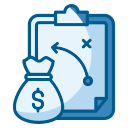Establishing a reliable emergency fund is a cornerstone of sound financial health. Often overlooked or underestimated, a well-constructed emergency fund can provide crucial stability during times of unexpected financial stress, such as job loss, medical emergencies, or urgent home repairs. Beyond offering immediate support, an emergency fund brings peace of mind and the confidence to navigate uncertain situations. This page delves into the essentials of planning, growing, and preserving your emergency fund, tailored for individuals and families seeking security and resilience in their financial lives.
Understanding the Importance of an Emergency Fund
Financial Security in Times of Crisis
An emergency fund acts as your financial shield when unexpected events strike. Life is inherently unpredictable, and crises such as medical emergencies, car breakdowns, or sudden job loss can arise at any moment. When these situations occur, having liquid funds readily accessible ensures you aren’t forced to liquidate investments at a loss or accumulate costly debt. By reducing your dependence on credit cards or high-interest loans, your emergency fund protects your overall financial health and keeps long-term goals on track, regardless of the temporary setbacks you face.
Reducing Stress and Anxiety
Knowing you have a dedicated reserve for emergencies provides significant psychological comfort. Financial uncertainty is one of the most common sources of stress, affecting both your mental well-being and decision-making ability. With an emergency fund in place, you can face unexpected expenses calmly without panicking or resorting to rash choices. This peace of mind ripples outward, fostering healthier relationships and allowing you to focus on growth and opportunity rather than constant worry about potential setbacks.
Enabling Long-Term Financial Goals
Maintaining an emergency fund is more than just preparing for the worst; it’s about supporting your broader financial ambitions. When emergencies arise and you are prepared, you avoid derailing your long-term plans such as home ownership, retirement savings, or education funds. Your emergency reserve acts as a buffer, preserving your investments and protecting your progress, ensuring that unexpected events don’t force you to compromise the future you are building.
Determining the Right Emergency Fund Size
Assessing Monthly Expenses
A reliable emergency fund begins with a thorough understanding of your regular monthly expenses. This assessment should include essential costs such as housing, utilities, groceries, insurance premiums, loan payments, and transportation. By identifying and calculating these outlays, you’ll establish the baseline for how much you would need to cover living costs during a period of lost income. Accuracy in this step ensures that your emergency fund will truly sustain you without falling short or overshooting your saving capacity.
Evaluating Personal Risk Factors
Everyone’s financial journey is unique, and so is their level of vulnerability to emergencies. When planning your emergency fund, consider factors such as job stability, number of dependents, health status, and existence of additional income streams. Individuals in volatile industries or with significant familial responsibilities may require a more substantial safety net. By evaluating your specific risks thoughtfully, you tailor your emergency fund to meet your true potential needs, increasing its effectiveness when adversity strikes.
Setting Your Emergency Fund Goal
With a clear picture of monthly expenses and personal risk, you can set a goal for your emergency fund’s size. Financial experts commonly recommend reserving three to six months’ worth of living expenses; however, your unique situation may warrant a different approach. Factor in your comfort level, risk exposure, and long-term objectives. A realistic, well-defined target empowers you to track your progress, stay motivated, and incrementally build the buffer that suits your life best.

Automating Your Savings Process
Automating your contributions is one of the most effective tactics for growing your emergency fund. By setting up automatic transfers from your checking account to your dedicated emergency savings account, you remove the temptation to skip deposits or spend what you intend to save. Even modest regular contributions can grow significantly over time when handled consistently. Automation puts your emergency fund progress on autopilot, ensuring that you build your reserve without relying on willpower alone.

Choosing the Right Account Type
Where you keep your emergency fund matters. The ideal storage combines easy accessibility with at least some return. Many opt for high-yield savings accounts or money market accounts, which offer competitive interest rates and allow quick withdrawals when emergencies arise. Avoid investments or accounts with penalties or delays for withdrawals, as immediate liquidity during a crisis is paramount. The right account protects your principal while giving you the confidence that your funds are safe and ready to deploy at a moment’s notice.
